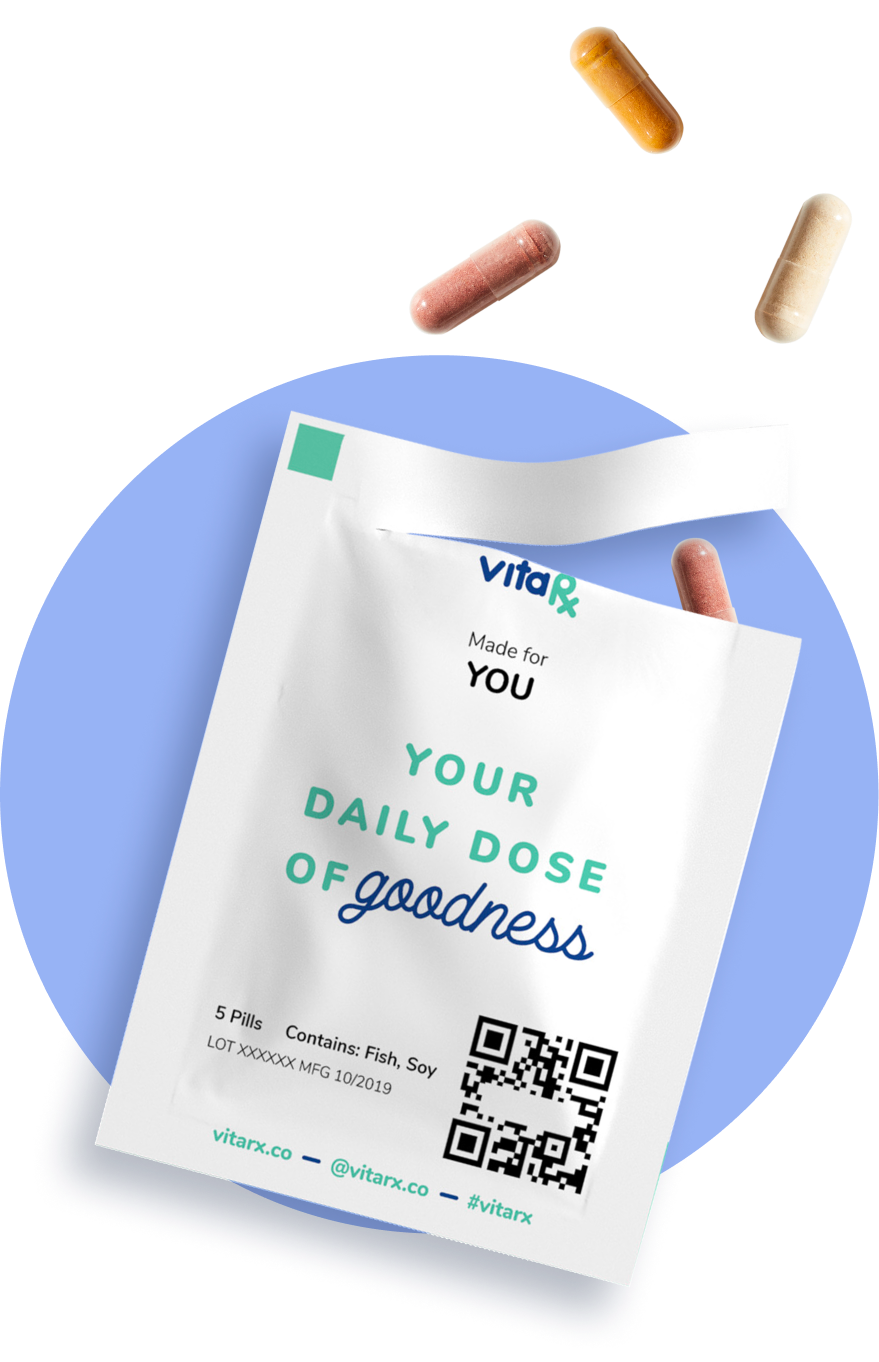Last update: January 20, 2025
4 minute read
What is mcg on Vitamin Labels
Decode mcg on supplements: Get clarity on micrograms for precise vitamin intake, with VitaRx.

By Stephanie Wright, RN, BSN
Edited by Dr. Jacquie Leone, NMD, HN

Have you ever wondered what "mcg" on your vitamin labels means? Understanding this small detail may make a big difference in how you manage your health. "Mcg" stands for microgram and is a way to measure some nutrients. This post will decode the mystery behind this common yet puzzling measurement and ensure you're informed about the vitamins you consume.
Key takeaways
- "Mcg" on vitamin labels stands for micrograms, a unit of measure for small nutrient amounts
- The FDA has switched from IU to metric units on labels for clarity
- Mcg is for weight; IU is for biological activity
What is mcg on vitamin labels?
Mcg is an abbreviation for microgram, a unit of measure that refers to a very small amount of a substance, much smaller than a milligram. It's the go-to measurement for nutrients only needed in very small doses.
What exactly does "mcg" stand for?
When you spot "mcg" on a vitamin label, you're looking at a unit called a microgram. It's a tiny measurement that helps tell you how much of a vitamin or supplement you're getting in each serving.
You might be more familiar with Mg, or milligram, which is one-thousandth of a gram. Well, mcg is even smaller.
- Microgram: One millionth of a gram
If you're checking out vitamin labels and see "ug," don't worry. It's just another way of writing "mcg." They mean the same thing and may be used interchangeably.
Why are micrograms used on supplement labels?
Micrograms are used on supplement labels to represent very small amounts of vitamins and minerals that your body needs. They make sure you get just the right dose— not too much, not too little. It's a balance that keeps you healthy, preventing problems that come from having too much or too little of certain nutrients.
For nutrients like vitamin B12, you're likely to see mcg used:
- Vitamin B12: Commonly listed in micrograms
- Folate: Another nutrient typically measured in mcg
The change to micrograms is happening because the government wants to make labels more standard and clear.
Is "mcg" equivalent to "mg" or "iu"?
Knowing the difference between micrograms (mcg), milligrams (mg), and International Units (IU) helps you figure out how much of a vitamin you're getting. Each one has its own job and shows a different amount.
- Micrograms (mcg): A tiny unit of weight
- Milligrams (mg): Equal to 1,000 micrograms, a larger unit of weight
- International Units (IU): A measure of biological activity, not weight
VitaRx Tip
Put simply, mg and mcg tell you how much a vitamin weighs, while IU tells you the expected effect of that vitamin based on activity level, not amount.
How have supplement labels changed?
The U.S. Food and Drug Administration (FDA) rolled out new supplement label requirements, They now ask for nutrients to be shown in mcg or mg instead of IU.
It's just a way to make things clearer on the labels. Here's a quick summary of what's different:
- Vitamin A, D, and E: Previously listed in IU, now alongside metric units
- Niacin and folate: Also shifted to consistent metric units
- Label updates: Became mandatory as of 2019
This shake-up was part of an effort to streamline nutritional information and make it more user-friendly.
How many micrograms are in a milligram?
This is how it works. 1 milligram is the same as 1,000 micrograms. Knowing this makes it easy to figure out how much of a nutrient you're getting without any trouble.
Advantages and disadvantages of understanding mcg measurements
Recognizing the pros and cons may illuminate why digesting information about mcg measurements is vital for anyone using dietary supplements.
Frequently asked questions (FAQ)
Final thoughts
In the world of health, knowing about micrograms (mcg) is like having a guide that helps you stay healthy. Understanding vitamin labels is important so you may make smart choices for your health. As you use this new knowledge in your daily routine, you'll see that even small amounts may have a big effect.
Source
Author

Stephanie Wright
Stephanie brings over 13 years of diverse nursing experience to the table, having honed her expertise in critical care, mental health, and utilization management. Her journey as a registered nurse across these various healthcare sectors underscores her adaptability and deep commitment to patient care.
Fact checker

Dr. Jacquie Leone
Dr. Leone holds a BA in Psychology, a Doctorate in Naturopathic Medicine, and board certification in holistic nutrition. In addition to practicing medicine, Dr. Leone has developed and currently teaches science and nutrition courses for a nationally accredited institution. She specializes in chronic illness, gastrointestinal dysregulation, inflammatory conditions, and mental health. Her unique approach combines the wisdom of Eastern medicine with the technology and science of Western medicine, offering an integrative approach heavily focused on functional medicine.
At VitaRx, we're not just passionate about our work — we take immense pride in it. Our dedicated team of writers diligently follows strict editorial standards, ensuring that every piece of content we publish is accurate, current, and highly valuable. We don't just strive for quality; we aim for excellence.
Related posts
While you're at it, here are some other relevant articles you might be interested in.

Get your personalized vitamin recommendations in less than
5 minutes.
Get your personalized vitamin recommendations in less than
5 minutes.






